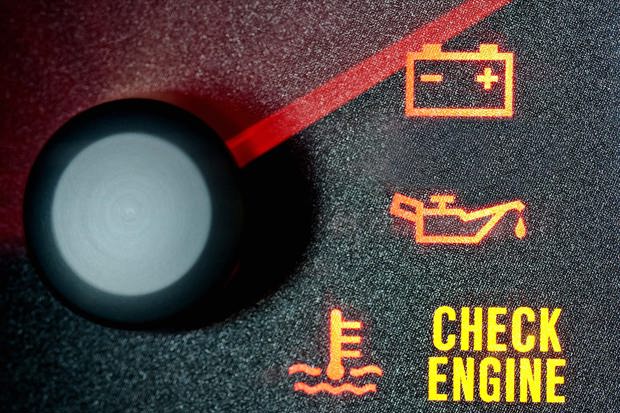1 in 3 drivers would IGNORE red oil warning light

A third of motorists admit they would carry on with their journey if a red low oil pressure warning light illuminated while driving.
The AA, which ran the huge survey of over 12,500 motorists, is now warning this could have catastrophic results, with potential engine damage running into thousands of pounds.
A further 1 in 4 motorists say they would carry on driving to a place of safety if the red engine coolant temperature warning light came on.
Alarmingly, a further 1 in 4 say they would wait until a red light came on before checking what it meant.
The AA is urging motorists to check what their car warning lights mean before they light up, in order to avoid huge repair bills and potentially being stranded at the roadside.
“A red warning light normally means immediate action is required,” says the AA. ‘Ignoring it can lead to vehicle damage and leave you stranded.”
Its research has revealed low oil pressure warning lights are often confused with yellow low oil level warning lights. If these light up, the vehicle can still be driven until a top-up can take place – in contrast to the red ‘stop immediately’ light.

In contrast, 1 in 10 more cautious motorists say they would stop immediately even if an amber light came on. “For these drivers, a little research could have saved them the time and inconvenience of reporting a ‘breakdown’.”
The motoring organisation says that, last year, it attended more than 17,000 breakdowns where the driver cited a dashboard warning light as the reason for the callout.
From these callouts, 9 in 10 vehicles could be driven away, with the driver simply needing reassurance as to what the issue was.
Many thousands more, however, are simply ignoring the warning lights and not bothering to call for assistance – and it is these motorists the AA is most keen to educate.
The sheer number of warning lights on many modern dashboards mean some motorists are getting into the habit of ignoring warning lights. While this is less of an issue with yellow ‘advisory’ lights, it could spell disaster if they ignore red ‘stop immediately’ lights.
“Learning what the main warnings lights and symbols mean before you actually need to know, can ease the strain if they come on when driving.
“Carrying out regular vehicle checks such as oil and coolant levels and tyre pressures and condition can also give you an indication of faults that may be developing, meaning these can be fixed before the need for a warning light to spoil your day.”
How much should an oil change cost?


